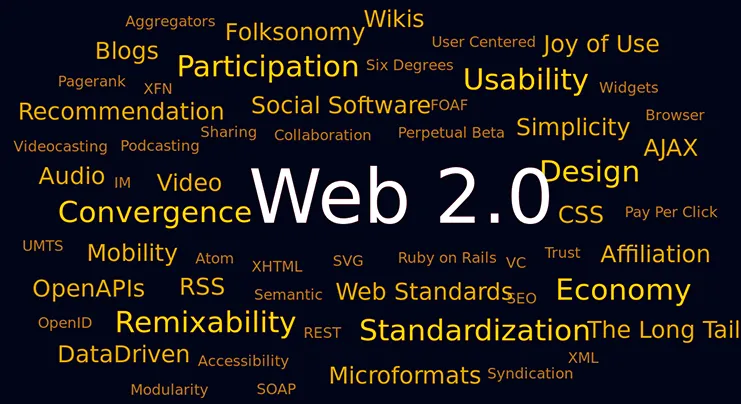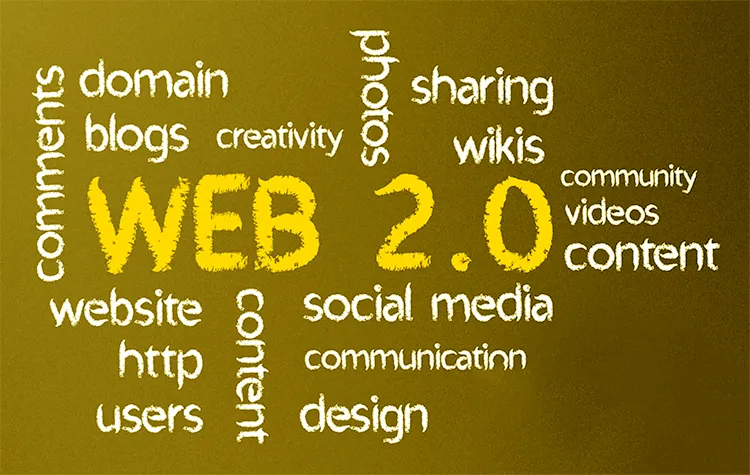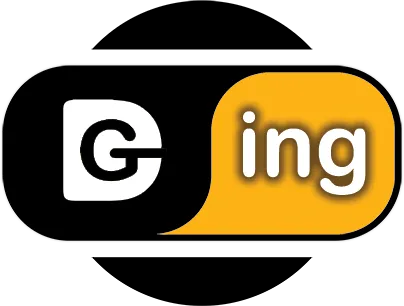Perhaps, when Darcy Dinucci wrote an article in 1999 to predict the future developments of the web world, or the second generation of the web, Web 2.0 , he never thought that this article would become so important that it would change the web world before and after. divide
Our guess is that he didn’t even keep a single copy of his article and today, he put a faulty and incomplete scanned version of it on his website.
Before we review the definition of Web 2.0 or the second generation of Web 2.0 , let’s read a few selected sentences from Darcy Dinucci’s 1999 article:
The web is ubiquitous and familiar to everyone.
Even your grandmother can recognize a web page: with that brochure-like shape, with those standard fonts, with graphics that grab attention, with links.
But it’s important to remember that what we see today is very fleeting for the web world and will change quickly.
It is important to remember that today’s generation of the web (Web 1.0) is very simple and basic compared to tomorrow’s web, and it does not seem like anything more than an experimental example.

Today’s web is just proof of the usefulness and effectiveness of a concept. The concept of providing interactive content that can be shown to others through a screen and accessible around the world is successful and an industry has formed to develop and revolutionize this new method.
The web as we know it simply displays a fixed and static page. The next generation of the web is currently in its infancy.
During the past years, following the method of Darcy DeVinucci, there is talk about the third, fourth and even fifth generation of the web. But we must not forget that the scale and importance of Dinucci’s work was far beyond what others do in imitation of him. Dinucci reminded us and emphasized that the future generations of the web, rather than depending on the change and transformation of technology, need the change and transformation of the attitude and mental model of web developers.
The most important point that Darcy Dinucci raised in the discussion of Web 2.0 and later on in 2004 in the first Web 2.0 conference was the concept of dynamism and interactive content . In the following, we will examine these two concepts in a simple way.
to be dynamic
The most important thing about being dynamic is that the content changes over time.
To better understand the concept of dynamic, it is enough to consider its opposite, that is, the concept of static and fixed. A page that never changes under any circumstances is considered a static page.
About us page on many sites can be introduced as an example of static pages.
An absolutely static site is a site where all pages are static.
But being dynamic has no limits. The fact that the contents of the pages change gradually is the first step in becoming dynamic.
The next steps can be changing the content based on the needs or tastes or characteristics of the audience, and other steps can also be imagined.
Being interactive
Being interactive means that the contents of a page can be changed by you and according to your will. This may be done in different ways. For example, that:
- You can choose from several options and the content will change according to your needs. For example, filtering products based on price is one of these examples.
- Be able to add content to the page, such as commenting on the site.
- Be able to react to a piece of content, for example, like a post or comment.
In other words, interactivity, like dynamicity, has a zero point. But there is no end to it.
The fact that you can send your message to the administrators of a site is a very simple form of interactivity. But to be able to produce your desired content and register it on the site is considered a more complicated form.
Wikis are among the latest achievements in the interactive communication model . To the extent that practically all their content is produced and offered by users.
You can find dozens and hundreds of examples on sites for both being dynamic and interactive.

Sometimes, when asked what is the feature of Web 2? We hear the answer that having a comment , having a registration form and a contact form with us, having likes, a wiki section on the site, using new coding technologies and things like that.
None of these are Web 2 features. Rather, they are simply features or capabilities that help to implement the features of Web 2, i.e. its interactive and dynamic nature. These are just examples and nothing more.
As if they say what is one of the characteristics of a human being? You don’t say that he can pronounce the word water and the word bread and the word tiramisu. Or he can read poetry. Rather, you say that he can speak.
Listing technical features such as RSS, dialog boxes, comments, etc. in the definition of Web 2 is a gross mistake. But in the case of professional design, they can be mentioned as some evidence and examples of paying attention to the second generation Web 2.0 .
Finally, it is important to remember the key point that the discussion of web one and two, or the next generations of the web, specifically refers to sites and not to applications and other Internet applications , so use the term web 2.0 only to refer to websites and Do not use this term for other tools in the digital space.














2 Comments. Leave new
I think this is among the most important information for me.
And i am glad reading your article. But should remark on few general things, The site style is wonderful, the articles is really nice :
D. Good job,
I think this is among the most important information for me.
And i am glad reading your article. But should remark
on few general things, The site style is
wonderful.